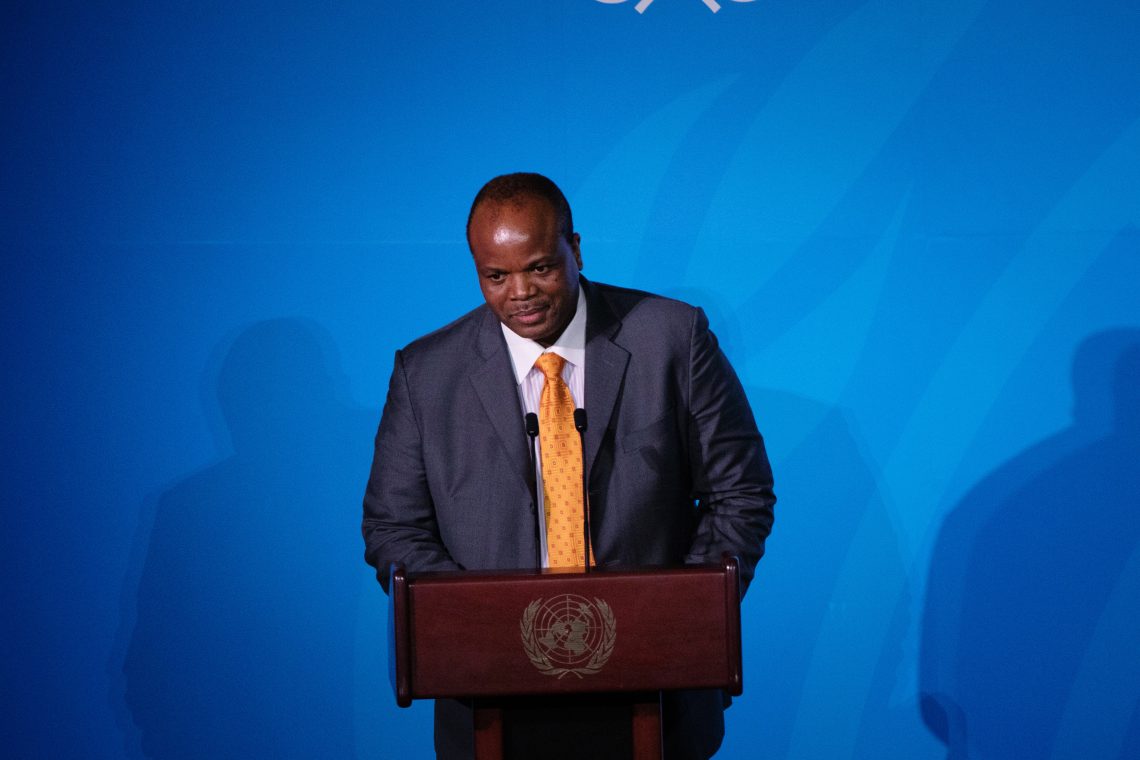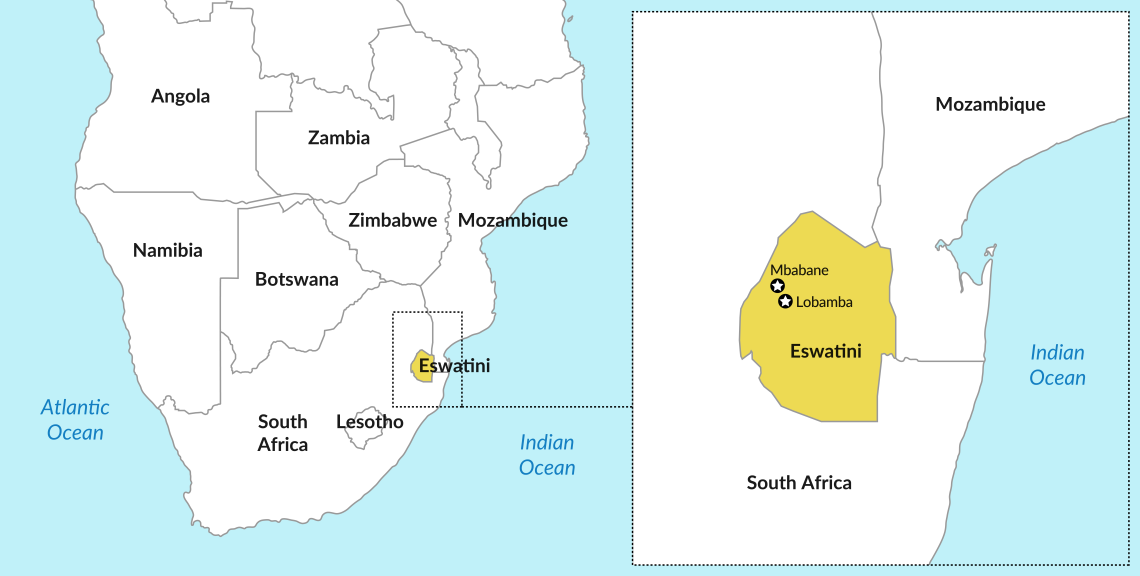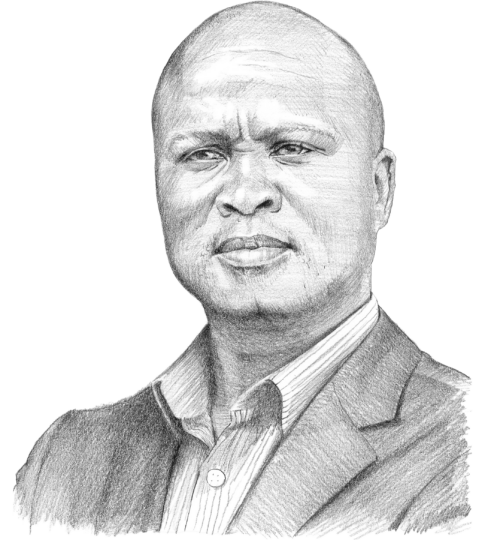Tensions flare in Eswatini
Eswatini’s King Mswati III has suppressed unrest for now. But opposition voices will continue to push for democracy, possibly leading to a transition of power.

In a nutshell
- Poverty has led to widespread anger
- There is no regional plan for stabilizing Eswatini
- Without reforms unrest will return
The Southern African Development Community (SADC) saw some noteworthy political developments in late 2021. SADC states are latecomers when it comes to democratization. South Africa was the last to embark on the path to a democratic system in 1994, following the collapse of the apartheid government. These countries share a tradition of postindependence politics dominated by left-leaning nationalist liberation movements. But the current state of the democratization process under the ruling parties has raised concerns about the future of the region.
SADC populations have become more politically engaged, and most countries in the region have adopted some form of democratic system – with varying degrees of success. The Kingdom of Eswatini (formerly Swaziland), where the monarch enjoys absolute power, is an exception.
South Africa has a relatively stable democracy, while Zimbabwe’s system has stagnated under the leadership of the Zimbabwe African National Union-Patriotic Front (Zanu-PF). The Botswana Democratic Party (BDP) is leading a democratic government, although it has been criticized for its uninterrupted rule since the first democratic elections in 1965. Lesotho has alternated military interventions with democratic procedures but still it forges ahead, often through protracted constitutional negotiations between different power brokers in the tiny kingdom.
Facts & figures
Eswatini on the edge

Eswatini bucking the trend
In Eswatini, the monarchy may not survive citizens’ demands for reform. In June 2021, a wave of pro-democracy protests began. Dozens of people died during clashes between authorities and protesters. Ever since, the country has been in political limbo.
A small kingdom with a population of under 2 million people, the Eswatini monarchy is a pariah in the region. The national poverty rate is over 60 percent, with unemployment exceeding 40 percent. King Mswati III, the head of state and government, has attracted international criticism for his lavish lifestyle financed by public funds. As a result, the population has turned against the monarchy. The country is also battling several challenges, including the Covid-19 pandemic and a nonexistent public health system.
By any measure, the Kingdom of Eswatini is not a successful monarchy – especially not as far as inhabitants are concerned. Amid rampant poverty, the population has grown dissatisfied with the political status quo.
The pro-democracy movement in Eswatini will have to fend for itself while the king cements his hold and eliminates immediate threats.
Eswatini shares deep cultural roots with bordering South Africa, including language. But its political scene stands in stark contrast to the increasingly dynamic South African system, where the youth has always dared to challenge the system. Eswatini provided refuge and safe passage for South Africa’s exiled liberation activists during the anti-apartheid struggle, supporting the African National Congress in its fight for democracy. Now the people of Eswatini are hoping Pretoria will return the favor and back political change in the kingdom.
But South Africa is not offering support for democratic reforms in Eswatini. The SADC regional body has not put forth a road map to end the political crisis. There are many factors behind this inaction, including ruling parties’ jitters over popular democratic movements that seek to challenge the establishment. Facing calls for more competitive politics in their own countries, SADC states have little appetite to help Eswatini introduce a democratic process in parallel to its monarchy.
Since the demonstrations and violence in June last year, the SADC sent envoys to Eswatini on a fact-finding mission. Protest organizers criticized the initiative, saying officials only met with groups friendly to the king. Unrest broke out again, but the government regained the upper hand.
South African President Cyril Ramaphosa responded on behalf of the SADC, stating there should be talks among key players. King Mswati III claims he has successfully quelled an insurrection. The SADC’s wait-and-see approach has done little to ease tensions, and the situation could erupt into uncontrollable violence if no talks for reform are put in place. A chaotic transition to a new regime could drag the country further down into the abyss.
Scenarios
The whole SADC has seen movements calling for more competitive politics. Opposition parties have been increasingly active, showing societies’ willingness to challenge the long-established governing parties that founded democracies in those nations.
There will be more such protests and violent clashes. Authorities will do their best to delegitimize popular movements for political reform. With many administrations in the region experiencing internal political crises, SADC leaders will remain wary of the situation in Eswatini.
It is unlikely that the SADC will take proactive measures to promote reforms in Eswatini if King Mswati III is able to keep a lid on protests – although there will probably be a resurgence of violence. The pro-democracy movement in Eswatini will have to fend for itself while the king cements his hold and eliminates immediate threats. Eswatini will remain unstable until the matter of a potential power transition is addressed.








